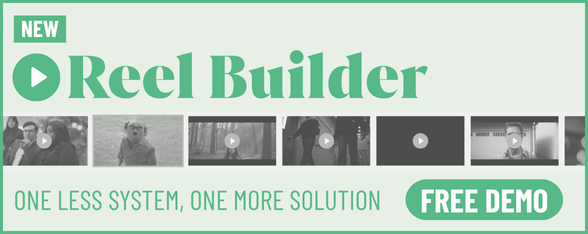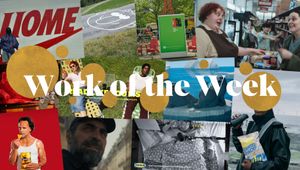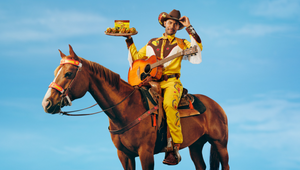
Finely Sliced: Finding a Solution in the Edit with Pieter Viljoen

Pieter fell in love with editing as a career when he was told that someone would actually sit down and listen to his opinions about their project. From dialogue driven comedy to visual storytelling, Pieter has had the chance to work with agencies such as Wieden+Kennedy, The Martin Agency, Goodby, Silverstein & Partners, 72andSunny, and The Lucky Generals for global brands including Netflix, Marvel, Nike, Amazon, Heineken, Geico, Hulu, eBay and McDonalds. He’s been tolerated by directors like Wayne McClammy, Anthony Leonardi III, Robert Stromberg, Jonathan Krisel, Amy Nicholson, Clay Weiner and Tony Kaye. He also once ran into Joe Pytka at a supermarket and is still waiting to have his call returned. Pieter has a Bachelor’s degree in music from McGill University in Montreal, and a Master’s degree from Northwestern University. He is still waiting for the chance to use them to earn actual money, and his mother still suggests law school. For now, he is on the roster of The Den Editorial.
LBB> The first cut is the deepest: how do you like to start an editing project?
Pieter> Fall in love with it in pre-pro. Commercials give us the chance to totally fall in love with a project, with the emotional safety net of knowing that the memories and the work will live for a long time, but the schedule won’t, so you can wear your heart on your sleeve. Whether it’s in the director’s treatment, or an exciting casting choice or maybe knowing it will be lensed by an incredible DP, that infatuation sustains you and lets you really get swept away even before the dailies arrive.
LBB> Non-editors often think of editing just in technical terms but it’s integral to the emotion and mood of a film. How did you develop that side of your craft?
Pieter> I try to be an intentional consumer of culture. We all eventually develop some kind of “taste”, but to apply it you have to start being conscious and honest about what art makes you laugh or feel empathy, nostalgia or whatever you experience. Maybe your favourite movie is actually ‘Home Alone 2’, instead of Tarkovsky’s ‘Stalker', which some guy who always wears a beanie and writes for Pitchfork says should be your favourite movie. Innately there are visual style perspectives that just speak to us, and chord progressions or sounds that we unknowingly seek out when we want more new music in our lives. I think that the more we identify these common threads in our taste, (that are totally unique to ourselves,) the better we’re able to apply it to the mechanics of our craft and our own self expression. As an example, I like dry humour, and as an editor, I’ve learned that silence and space are essential. Sometimes, that means being more minimal in the edit, letting go of the ego and sometimes letting something play in the master rather than a series of clever edits.
LBB> How important is an understanding of story and the mechanics of story?
Pieter> Every emotional payoff or great joke has to be earned, and in 30, 60, or even in 15 seconds, the earning of those few chances at a laugh or a lump in the throat will have no effect if we don’t justify them in the setup. It’s easy enough to select the most beautiful shot or the funniest performance, but real mastery is in the establishment of context and building a pedestal for what you want to put on display.
LBB> Rhythm and a sense of musicality seem to be intrinsic to good editing (even when it’s a film without actual music) – how do you think about the rhythm side of editing, how do you feel out the beats of a scene or a spot? And do you like to cut to music?
Pieter> I have a couple of degrees in music and spent years studying music theory and musicology, from Baroque composers up to contemporary popular music, and from the time that I was an assistant editor, finding and cutting music was an important part of my job. Ironically, in my spots, music mostly punctuates or italicises a moment, rather than drives the piece, or it just sits back kind of incidentally. Despite how much music is in my house, it features in my working life less than I’d like than I’d I did more montage work where music is more often a bigger driver.
LBB> Tell us about a recent editing project that involved some interesting creative challenges.
Pieter> Being a cheerleader, therapist and problem solver for agency creatives this January when clients leaned heavily on testing to try and move the needle on the USA Today AdMeter.
LBB> In the US we know that editors are much more heavily involved across the post production process than in Europe - what’s your favourite part of that side of the job?
Pieter> I love being a focal point in a large project. To me, there’s nothing more fun than when a mixer, or a VFX sup or a designer sends something to you asking, “Hey, what do you think of this?” Especially on big VFX jobs with long post schedules, you have a chance to really get into it on other elements like sound design and music, since there’s time. On some jobs, I’m on set which makes you a partner with the director from the start, and that can be the most fun when your help on set can inform some of the shooting. Most of the time it’s to support CG or practical VFX, and that kind of high stakes, must-get-it-right on the day is a lot of fun for me as an editor. I take any chance I can get to be involved in pre-pro, whether it’s just a call or doing an animatic just to help get everyone aligned. Sometimes as an editor you can end up just as some guy in a dark room, and you miss out on the energy and dynamism of an active production, but if you’re open to becoming more of a conduit in post, you can have a much more vibrant role in the making of something.
LBB> What’s harder to cut around – too much material or not enough? (And why?)
Pieter> It’s a cruel irony that jobs that shoot “too much” footage never actually have enough, because no single idea is ever fully fleshed out in order to make time to film as many alts as overtime, meal penalties, and human endurance will allow. In the end, there’s always a solution in the edit, but the toughest jobs to get across the finish line are usually the ones that come with the most terabytes.
LBB> Which commercial projects are you proudest of and why?
Pieter> Even though I don’t often do non-live action, ‘The World is on Netflix’ spot was incredibly rewarding to go from hand sketches all the way to full CGI renders, with so many steps in between. Robert Stromberg is kind of a legend in the world of high end CGI, and as an editor, I got so much creative input with how to animate the aliens’ (especially the faces), using rough comps and some animations I did in After Effects. It was one of the most collaborative things I ever did, and Marcus Taormina, the VFX Supervisor, was also a dream.
LBB> There are so many different platforms for film content now, and even in advertising something can last anything from a few seconds to a couple of hours. As an editor, are you seeing a change in the kind of projects you’re getting from brands and agencies?
Pieter> Agencies have so much more to answer for in terms of how their work performs in a quantifiable way. I see a lot more boards for unique 15s (sometimes no 30 or longer pieces at all) than ever before, because that just works better for some clients. I also know that my clients are really accountable for how our 16x9 work is going to actually live out in the wild, and not treat that as an afterthought.
LBB> Who are your editing heroes and why? What films or spots epitomise good editing for you?
Pieter> These might now feel a bit old, and they’re from when I got into the business as a Vault manager, so that’s why they’ve continued to have such an impression on me, but here’s three stunners.
Robert Duffy cuts absolutely stunningly in music driven pieces. His body of work, in particular with Mark Romanek, is about as good as it gets for me. This Jordan spot is perfection in dramatic storytelling, like a Caravaggio that has come to life with someone who innately understands the music they’re cutting with.
Steven Gandolfi cut this for Adam Hashemi. Not a frame is out of place, I love it so much.
Joe Guest creates a sense of drama about butter that I marvel at. He makes a bunch of inserts feel grandly propulsive with a melodramatic wink.
LBB> How does editing in the commercial world differ from the film world and TV world?
Pieter> In commercial edits there’s a lot more people to talk about the lunch order with.
LBB> Have you noticed any trends or changes in commercial editing over recent years?
Pieter> More remote work with kinder hours, more focused and productive editing when we hop on together.















